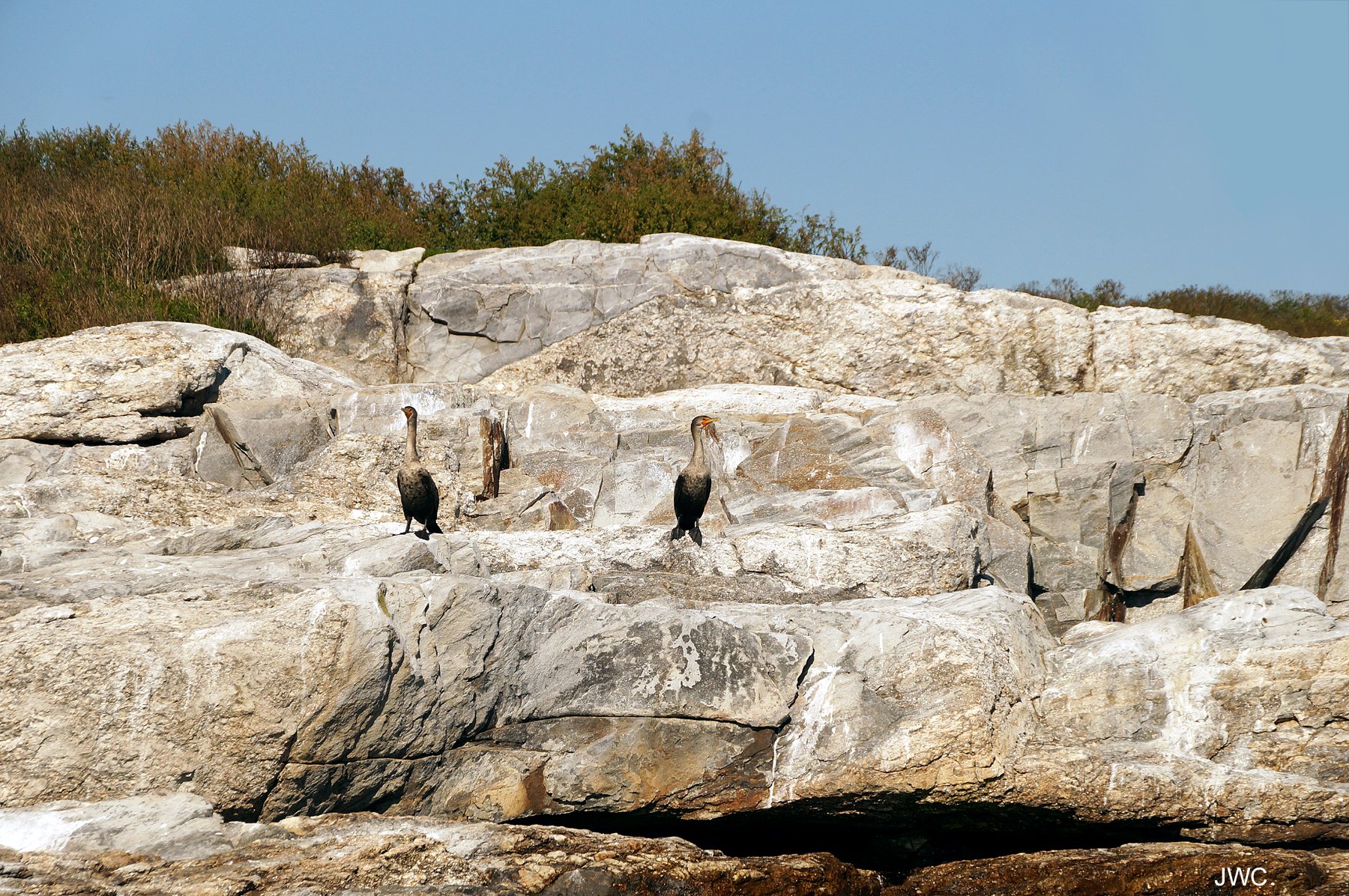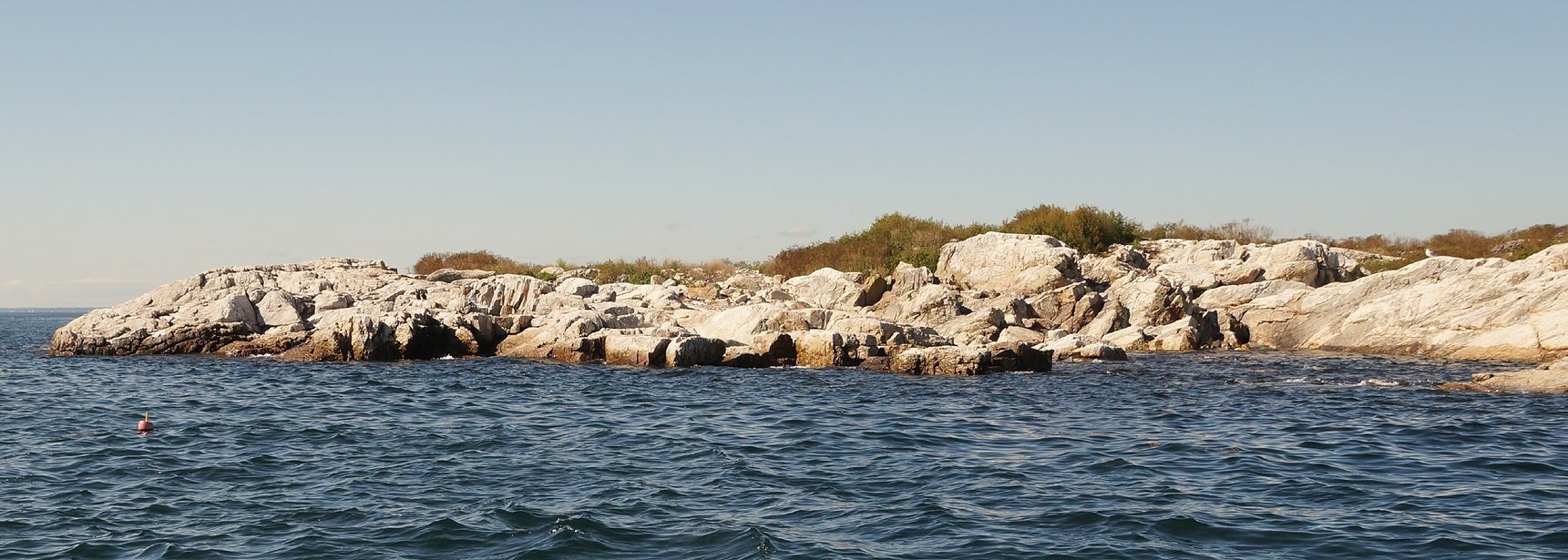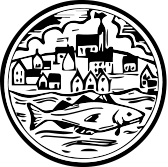
Duck Island
photo by Jim Cerny
Duck, the northernmost of the Isles, is named after the migrating birds that inhabit the 8.5-acre island.
Duck is known as “an uninhabited rock pile.” In the 1950s-60s, the U.S. Navy used the island as a bombing range. Bombers stationed at nearby Pease Air Force Base would fly over the island and drop a variety of bombs. The purpose was to check the bomb release mechanisms of the planes and the accuracy of their bomb sights.
Duck’s ledges are also popular with sunbathing seals.
photo by Denise Wheeler
After military operations ceased in 1967, Duck was sold to Star Island Corp., then to the Maine Coast Heritage Trust in 2002. Ownership was later transferred to the Department of the Interior for inclusion in the Maine Coastal Islands National Wildlife Refuge. The island is now managed by U.S. Fish and Wildlife Services as a wildlife sanctuary and is off limits at all times. This is due as much to the threat of unexploded devices and the liability around that as it is to the fact that Duck is now a wildlife refuge.
Prior to its use as a military target, fishing shacks were located on the island in the 1800s. For an 11-year period between the 1910s and the 1930s, the Cilley family had a small home on the island — the only people known to have lived there.
To the east and south of Duck’s shore lay Shag and Mingo rocks.

“Two miles northeast from Appledore, Duck Island thrusts out its lurking ledges on all sides beneath the water, one of them running half a mile to the northwest. This is the most dangerous of the islands and, being the most remote, is the only one visited to any great degree by the shy sea-fowl that are nearly banished by civilization. Yet even now, at low tide, those long black ledges are often whitened by the dazzling plumage of gulls whose exquisite and stainless purity rivals the new-fallen snow.”
- Celia Thaxter, “Among the Isles of Shoals”
photo by Jim Cerny


